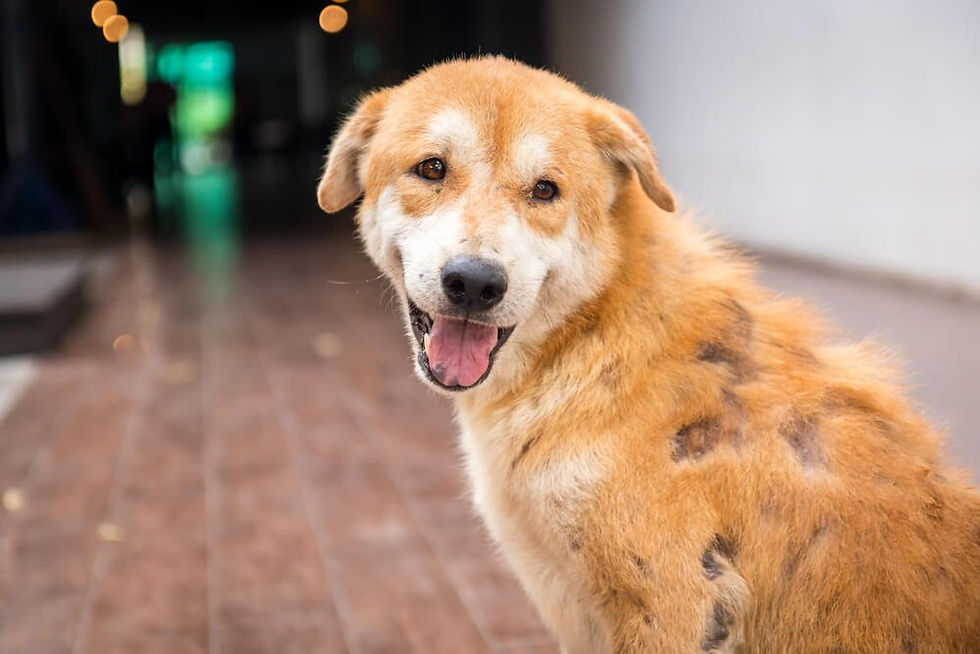Caissie Canine Instruction: Keeping your dog safe around wildlife
- caissiecanineinstr

- Mar 20, 2023
- 2 min read

We begin this week’s “RUFF TAILS” featuring a beautiful 17-month-old Mini Aussiedoodle named Izzy.

Hi everyone, my name’s Izzy and I’m a “wanna-be lumberjack”. When I’m not carrying or chewing sticks (the bigger, the better), I love learning new games and skills, and try hard to be good once I understand what’s expected of me. Treats help a lot!
I can be reactive when I see other dogs or people that I don’t recognize. I am doing much better since wearing my e-collar. I love to play and hang out with my 11-year-old standard poodle sister Georgia.

Welcome to Doggie Dialogue
Both dogs and cats love chasing wildlife. Squirrels, birds, raccoons, bunny rabbits, and unfortunately skunks or porcupines. Our police dogs were skunked more than once, and our friend’s dog ended up with a face full of porcupine quills.

(Porcupine quills should be removed immediately by your vet. Never cut the quills, it makes it significantly more difficult for the vet to remove them.)
Dogs getting skunked, often happens as dogs are curious to meet a new “friend” and end up getting too close.

Wildlife often carries several diseases and parasites, such as ticks, worms, and even rabies, that can transmit to your dog. Thank goodness many of these diseases have vaccines available to protect our pets.
Wild animals can also injure your dog, which can land your dog in the vet’s office, possibly requiring extensive surgical repair. Your dog may also harm or kill the wildlife, as this can be seen as prey and is a primal instinct for your dog to defend their territory.

We have found the best way to keep your dog safe around wildlife is to try to avoid the encounter. Early detection is key. If you smell a skunk, or hear a coyote, head the other way and keep your dog close to you. As Spring approaches, it is “baby” season for many wildlife species and the mothers can be ferociously protective.

Keeping your dog walks to mid-morning or early afternoon would be ideal, as most active wildlife occurs during dawn or dusk. Keep a close eye on your pets when letting them out for their nighttime pee, as wildlife can find their way into your fenced-in yard.
Rabbits, raccoons, and possums love to dig around backyards looking for leftover goodies.

Wildlife can be tempted by the smell of food, dog kibble, and garbage. We recommend trying to discourage the amount of wildlife coming into your yard by investing in “wildlife proof” green bins, recycling and garbage pails.

For extra safety we recommend feeding your pets inside the house and keeping your yard de-cluttered, this will help prevent wildlife from living or hiding in your yard.




Comments